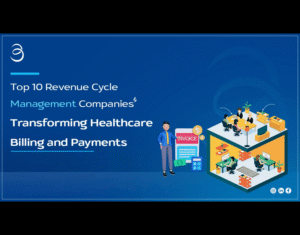
In today’s fast-paced financial environment, banks and financial institutions are increasingly focused on efficiency, accuracy, and customer-centric operations. Traditional lending processes, reliant on manual workflows and paper documentation, are no longer sufficient to meet the growing demands of digital banking and FinTech competition. A loan origination system (LOS) offers a modern solution, streamlining the entire loan lifecycle from application to disbursal while enhancing customer experience and operational efficiency.
Understanding a Loan Origination System
A loan origination system is a software platform that automates and manages the loan approval process. From capturing borrower information to performing credit assessments, document verification, and final approval, an LOS centralizes all aspects of loan processing. By reducing manual intervention and integrating digital tools, banks can achieve faster turnaround times, improved accuracy, and enhanced compliance.
Key features of a loan origination system include:
- Automated Application Processing: Collects and validates borrower information efficiently.
- Credit Assessment and Scoring: Integrates with credit bureaus and internal scoring models for accurate risk evaluation.
- Document Verification: Supports digital KYC and identity verification processes.
- Workflow Management: Tracks loan applications across departments and approval stages.
- Compliance and Reporting: Ensures adherence to regulatory standards and generates actionable reports.
Implementing an LOS allows financial institutions to optimize lending operations while delivering superior service to their customers.
Advantages of a Loan Origination System
- Increased Efficiency
Manual loan processing is time-consuming and prone to errors. A loan origination system automates repetitive tasks, reduces processing times, and minimizes human error, allowing staff to focus on value-added activities. - Enhanced Customer Experience
By enabling online applications, real-time status updates, and faster approvals, a loan origination system improves the borrower’s journey and satisfaction. - Improved Risk Management
LOS platforms provide sophisticated credit assessment tools, fraud detection, and predictive analytics, helping banks make informed lending decisions and reduce defaults. - Operational Scalability
Modern LOS solutions can handle high volumes of applications, making it easier for banks to scale their lending operations without increasing operational costs. - Integration Capabilities
A loan origination system integrates with banking core systems, digital wallets, UPI platforms, and credit bureaus, ensuring seamless workflow across the entire lending ecosystem.
Transforming Loan Portfolios
One of the most significant benefits of adopting a loan origination system is transforming loan portfolios. By leveraging automation, analytics, and real-time monitoring, banks can optimize their lending portfolios for profitability and risk management.
- Portfolio Diversification: LOS platforms provide insights into loan types, borrower profiles, and geographic distribution, enabling better diversification strategies.
- Predictive Analytics: Machine learning models within the LOS can forecast potential defaults, repayment trends, and portfolio performance.
- Loan Restructuring: Data-driven insights allow banks to restructure loans or adjust terms proactively to minimize risk.
- Enhanced Reporting: Real-time dashboards and analytics improve portfolio transparency for management and regulators.
By transforming loan portfolios, banks can balance growth with risk management, ensuring long-term financial stability and competitiveness.
Integration with Digital Lending Solutions
Modern banking relies heavily on digital channels. A loan origination system seamlessly integrates with digital platforms, mobile apps, and online portals to offer a fully digital lending experience.
- Online Applications: Borrowers can apply for loans anytime, anywhere, reducing the need for branch visits.
- Digital KYC and Document Upload: Enables secure verification and faster processing.
- Credit Line Integration: LOS platforms can integrate with services like Credit line on UPI, providing instant access to funds.
- Real-Time Tracking: Borrowers and bank staff can monitor application status and repayment schedules via dashboards.
This integration not only improves customer convenience but also allows banks to reach underserved populations and expand their lending footprint.
Key Features to Consider in a Loan Origination System
When selecting a loan origination system, banks should evaluate features such as:
- Multi-Product Support: Ability to handle personal loans, business loans, mortgages, and credit lines.
- Automated Workflows: Streamlined application routing, approval processes, and notifications.
- Analytics and Reporting: Comprehensive insights for portfolio management, risk assessment, and regulatory compliance.
- Fraud Detection: Advanced AI tools to identify suspicious patterns and reduce fraud risks.
- Cloud and Mobile Accessibility: Secure access for staff and borrowers across devices and locations.
- Regulatory Compliance: Adherence to local and international lending regulations, ensuring legal compliance.
A feature-rich LOS provides banks with the tools necessary to manage loans efficiently while offering superior service to borrowers.
Applications of Loan Origination Systems
A loan origination system is applicable across a wide range of financial operations:
- Retail Lending: Streamlines personal loans, credit card financing, and microloans.
- Corporate Lending: Supports commercial loans, working capital financing, and trade credit.
- Digital Banking: Enables instant approval and disbursal of loans via online channels.
- NBFC Operations: Provides automated loan processing for small-ticket loans to underserved customers.
In each scenario, LOS platforms reduce turnaround time, improve compliance, and enhance customer experience.
Leading Providers of Loan Origination Systems
Several companies provide robust loan origination system solutions to meet the diverse needs of modern banking. Top providers include:
- Pennant
Pennant offers scalable LOS solutions with advanced automation, analytics, and digital integration for banks and financial institutions. - FIS Global
FIS provides comprehensive LOS platforms that integrate digital banking, credit scoring, and portfolio management. - nCino
nCino delivers cloud-based LOS solutions, enabling fully digital loan origination, approval workflows, and compliance management. - Temenos
Temenos offers modular LOS solutions that cater to retail, corporate, and digital lending needs. - Finastra
Finastra combines lending, treasury, and risk management in a unified platform, streamlining loan origination and monitoring.
These companies ensure high reliability, robust security, and operational efficiency for banks and NBFCs adopting LOS platforms.
Tips for Optimizing Loan Origination System Implementation
- Clearly Define Objectives: Identify whether the LOS will focus on retail, corporate, or digital lending.
- Ensure Data Integration: Connect the LOS with banking systems, credit bureaus, and digital wallets for seamless operations.
- Train Staff Thoroughly: Proper onboarding ensures effective use and maximization of LOS capabilities.
- Monitor Performance Continuously: Use analytics to optimize workflows, reduce defaults, and improve portfolio quality.
- Leverage AI and Automation: Incorporate predictive models and automation to reduce turnaround time and enhance decision-making.
By following these best practices, banks can fully leverage the benefits of a loan origination system, improving efficiency, accuracy, and customer satisfaction.
Future Trends in Loan Origination Systems
The LOS industry is evolving rapidly with technological advancements and changing consumer expectations:
- Artificial Intelligence and Machine Learning: Automates credit scoring, risk assessment, and fraud detection.
- Cloud-Based Platforms: Provides scalable, secure, and cost-effective deployment options.
- Mobile Lending Integration: Offers borrowers access to instant loans and account management on mobile devices.
- Open Banking Connectivity: Enables seamless integration with multiple financial ecosystems for improved services.
- Advanced Analytics: Real-time insights into loan performance, borrower behavior, and portfolio health.
These trends indicate that loan origination systems will become increasingly intelligent, automated, and customer-focused.
Conclusion
A loan origination system is a critical tool for modern banks, NBFCs, and FinTech companies, streamlining loan processing from application to disbursal while enhancing operational efficiency, compliance, and customer experience. By integrating innovations like Credit line on UPI, banks can provide faster, more flexible, and customer-centric lending solutions.
Top providers such as Pennant, FIS Global, nCino, Temenos, and Finastra deliver feature-rich, scalable, and secure LOS platforms that empower financial institutions to meet the demands of a digital-first economy. By implementing a loan origination system, banks can transform lending operations, improve portfolio management, reduce risk, and deliver superior service, ensuring sustainable growth and competitiveness in the modern financial landscape.



